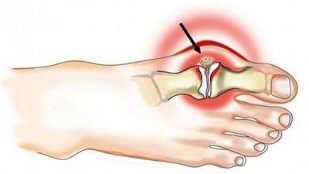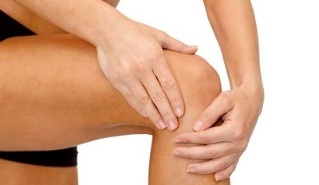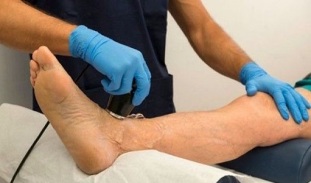Arthritis and arthrosis are quite common at the moment. Many people confuse this disease because of the similarities in their manifestations. Yet, in fact, the two diseases are very different from each other. You can understand the difference between diseases only if you know its characteristics.
Type of pathology

It is impossible to determine joint disease based on pain alone. Almost all diseases of the musculoskeletal system are accompanied by pain.
The following diseases are the most common:
- Arthritis,is provoked by inflammation of the articular surface. This inflammation occurs for a variety of reasons. The primary form develops against the background of a number of gout, septic and rheumatic diseases.
Secondary forms can develop after systemic lupus erythematosus, borreliosis, arthropathy.
- Arthrosis,provokes the destruction of cartilage and the part of the bone that lies beneath.
Primary usually grows for no reason. Often manifests itself in the elderly and affects the surface surface of large symmetrical bone joints.
The secondary form of the disease occurs after suffering from a serious illness. Often, the development of this form is due to genetic predisposition.
Often, inflammation of large bone joints (shoulders, knees) is caused by being overweight, intense physical activity, past trauma and endocrinological diseases.
- Arthropathies - violations of joint integrity due to complex diseases.
- Tendonitis is an inflammatory process that occurs in tendons.
- Enthesitis - structural change at the junction of soft tissue with bone.
- Bursitis is an exchange lesion.
- Capsulitis - inflammation and violation of the integrity of the joint capsule.
How to distinguish arthrosis of varying severity from arthritis? You need to know that arthritis and arthrosis have different manifestation properties, which determine the treatment of arthritis.
Feature differences

How does arthritis differ from arthrosis? Signs that indicate a certain disease. The symptoms of arthritis and arthrosis of the knee joint are specific.
What is arthrosis? Chronic diseases that are naturally destructive. The peculiarity of this disease is that it affects the cartilage and is irreversible.
The disease most often affects people of both sexes over the age of 60. That is, arthrosis of the knee joint is considered a disease in which mass destruction of cartilage occurs. First, large joints are affected, for example, the ankle. His treatment should be given special attention.
When rheumatoid arthritis touches the hands or feet, inflammation is found simultaneously in several bone joints. The main difference between arthrosis and arthritis is that the second disease is accompanied by inflammation of the large bone joints - the knees, shoulders.
Arthritis has a number of secondary symptoms. In particular, it causes swelling in the joints, redness around it. In addition, patients experience fever, blocking motor function. One of the factors that can cause illness: allergies, infectious diseases, metabolic disorders and trauma.
In the event of an inflammatory process, a person's motor activity is disrupted. In particular, the range of motion is significantly reduced. These restrictions apply to movements performed independently and movements that require one’s help.
Inflammation affects one or more joints at the same time. Usually this phenomenon is accompanied by pain without a clear localization, and the articular surface of the ankle or foot joint remains intact.
Keep in mind that the main danger of this disease is that changes occur not only in bone tissue, but also in other organs, for example the digestive, visual and excretory organs. Changes can also affect the dermis.
The disease affects people of all ages, however, most often, the disease is diagnosed in women aged 35-50 years.

As for pain, arthritis accompanies it all the time. In the presence of arthrosis, the destruction of bone tissue is usually asymptomatic, without causing pain, so that the patient is unaware of it.
In the first case, the disease manifests itself in several ways. It is accompanied by weakness of the body, sometimes psoriasis. In the latter case, all inflammatory changes occur without external signs.
Inflammation of arthritis appears externally by swelling of the soft tissues. They are also characterized by paralysis of the joints. Different changes take place smoothly and practically do not manifest themselves. However, they are characterized by a certain "dryness" that appears as a result of joint wear.
What is the difference between arthritis and arthrosis? The latter provokes the destruction of cartilage, and rheumatic disease manifests itself as inflammation of bone tissue. These are the main signs for a person to differentiate between arthritis that strikes a person or arthrosis.
Differences in symptoms
How are different arthrosis different from arthritis? Osteoarthritis and arthritis differ in the symptoms of the disease. Knowing them is very important, as symptoms and treatments are interrelated.
Arthritis and arthrosis of the knee joint show similar symptoms. However, you can still distinguish between the two. Arthritis and arthrosis of the knee joint etc. are indicated by severe pain. However, the nature of the pain is different. With arthrosis, the patient feels pain while moving or because of a heavy load on the knee. He was sick, the attack lasted a long time.
The first stage is characterized by mild pain, therefore, the disease is often detected only during diagnosis.
In the next stage, the patient feels pain even under light load conditions.

In the third stage of its development, the disease is considered neglected. Pain may appear even when there is no movement at all. After changing the position of the joint to be comfortable, the pain subsides.
Hand, shoulder or hip pain is characterized by acute pain that does not go away at all. Often the onset of pain begins in the early morning. The symptoms of arthritis and arthrosis are different. You can understand whether arthritis or arthrosis has affected the joints with the presence of cramps in them. If it is heard, this means the second disease strikes the bone articulation.
Arthrosis of the knee joint or other large joint can be accompanied by a fracture if the cartilage layer has ruptured and there is direct contact with the bone.
This disease has a negative effect on the movement of one affected joint. For example, knee arthrosis is accompanied by pain in the legs. Rheumatoid arthritis or other types of arthritis occur with a feeling of cramps all over the body.
How does arthritis differ from arthrosis? In addition, gonarthrosis occurs without external swelling, but with external changes in the joints.
Arthrosis or arthritis affects the joints: what is the difference? In addition to the main symptoms, arthritis is accompanied by hyperthermia, inflammation of the eyes, excessive sweating, and weakness.
Diagnostic differences
It is possible to diagnose arthritis of various origins and arthrosis simply by determining the cause of the development of the disease. Treatment begins only after the stage of disease development activity is determined. In addition, during the diagnosis, the attending physician must make a prognosis to avoid adverse outcomes.
Treatment of arthrosis at various stages and arthritis begins only after a detailed diagnosis.

The medical testing complex consists of general clinical laboratory research, X-rays, microscopy and bacteriological research.
Diseases of various origins differ in the results of the analysis performed.
If arthritis and arthrosis are not treated immediately, it is impossible to cure them. In addition, systematic prevention of arthritis and arthrosis should be undertaken. Do you want to get rid of arthritis and arthrosis through effective treatment? Get a major checkup that includes MRI and arthroscopy.
An informative method that allows you to identify the different manifestations of arthritis from knee joint arthrosis is X-rays.
Differences in treatment
How to treat arthritis and arthrosis? Symptoms and treatment of interrelated diseases. The treatment of rheumatoid arthritis is the same, but there are some differences. From a medical point of view, the disease is different, therefore, the treatment of arthrosis and arthritis is definite.
How to treat arthrosis and rheumatoid arthritis? Complex therapy will help cure any disease. In both cases, patients with arthrosis and arthritis were prescribed treatment, including medication (medications prescribed by a doctor). Physiotherapy is prescribed, i. e. physical therapy, which is very important for patients with arthritis or a form of knee joint arthrosis, as this helps speed up treatment. For arthritis and arthritis of the joints, treatment includes diet, a varied menu.
Those who want to improve their health "without medication" often carry out treatment with various folk remedies.
The disease can last a long time and become chronic. While there is a reason for their appearance, they provoke the development of complications. That is why patients must be constantly or for a long time under medical supervision and undergoing rehabilitation, whose program has been developed specifically for them.
To prevent disease progression, special attention should be paid to disease prevention.

- First, it is necessary to treat all diseases of the musculoskeletal system in a timely manner and undergo a thorough recovery after injury.
- Second, you should limit or at least a dose of physical activity, eat properly and monitor your weight.
- Third, you should see a doctor systematically to determine the presence and correct bone defects in a timely manner.
Thus, the difference between the two diseases is significant. It manifests itself in the symptoms, signs and causes of the disease. The nature of this course is also special. Without timely help, inflammatory processes in bone and cartilage tissue can lead to complications.
Prevention will help prevent this disease or disease that needs special attention.



































